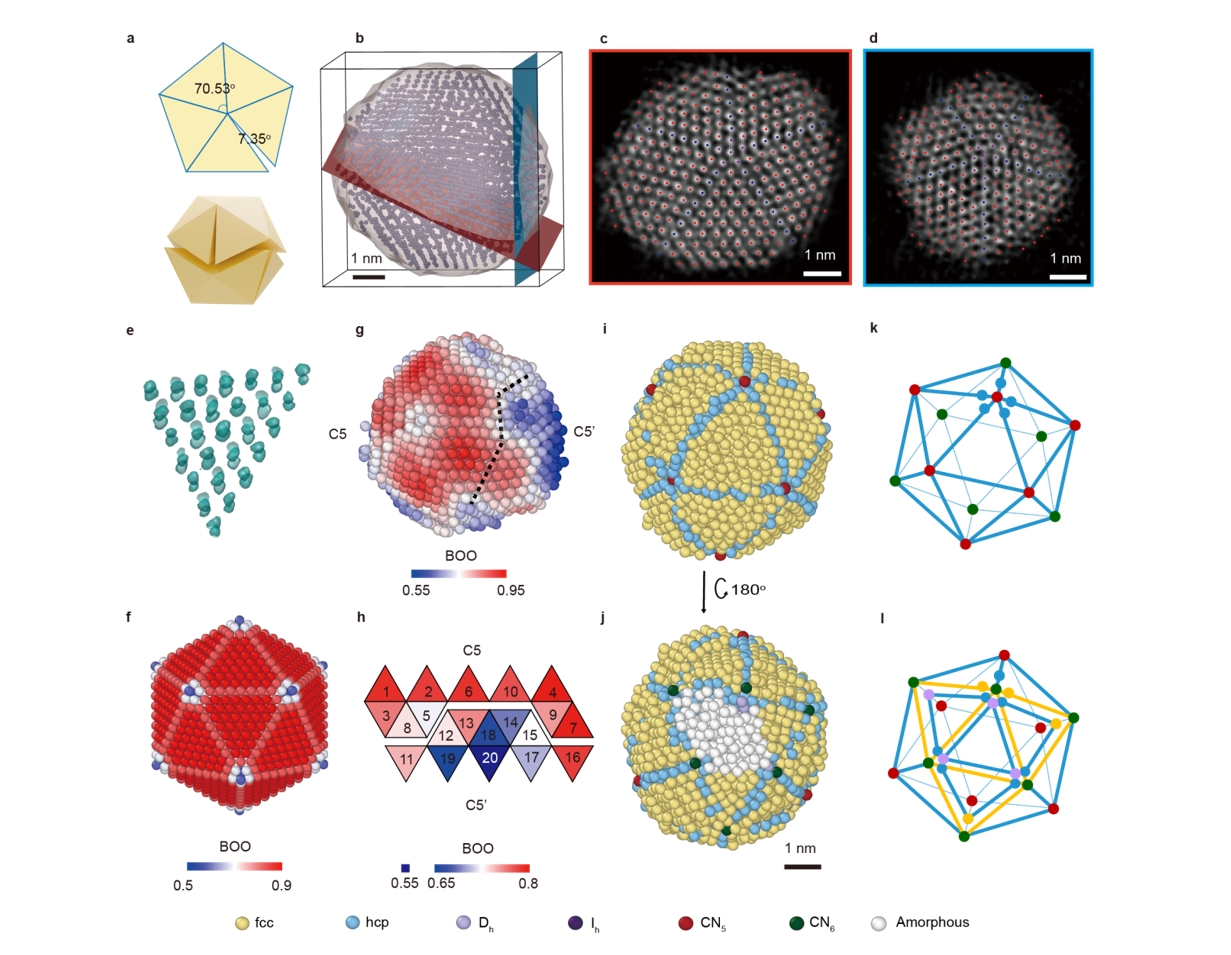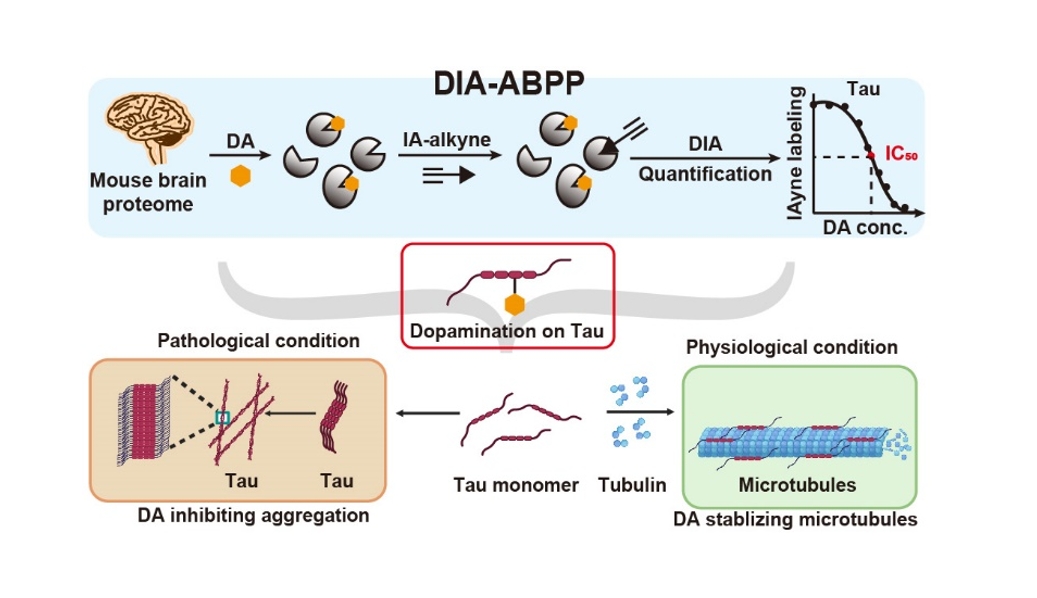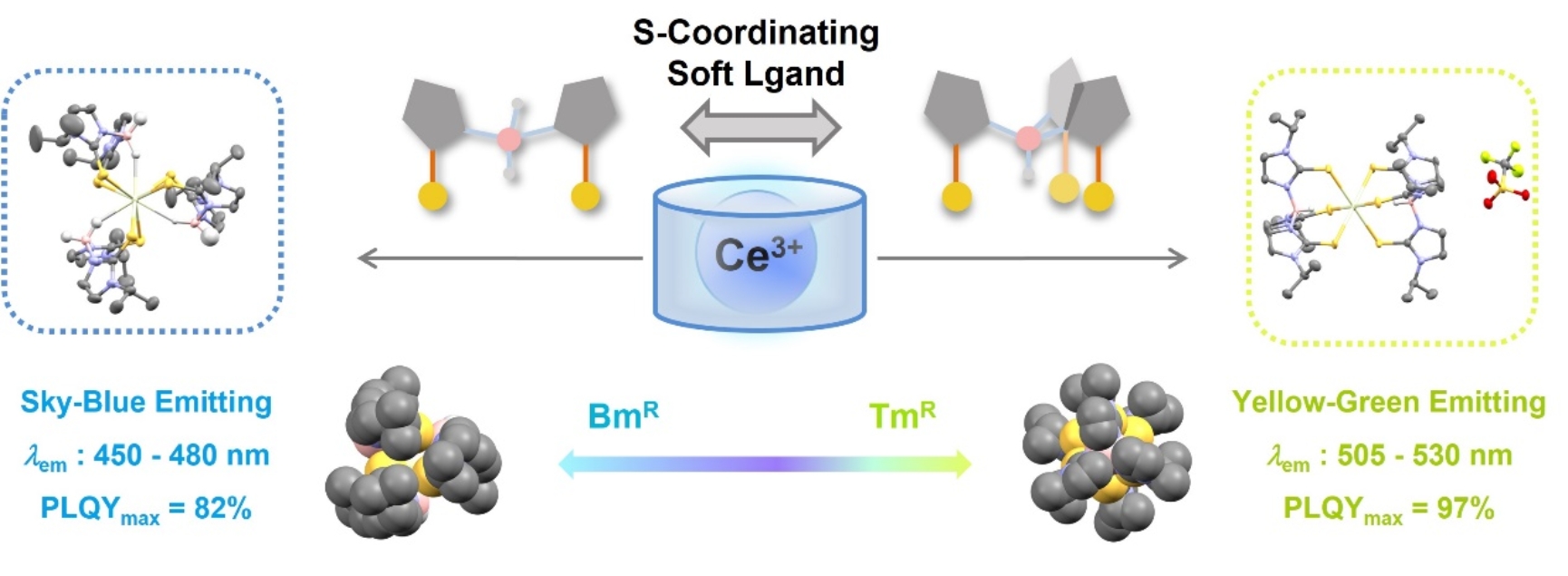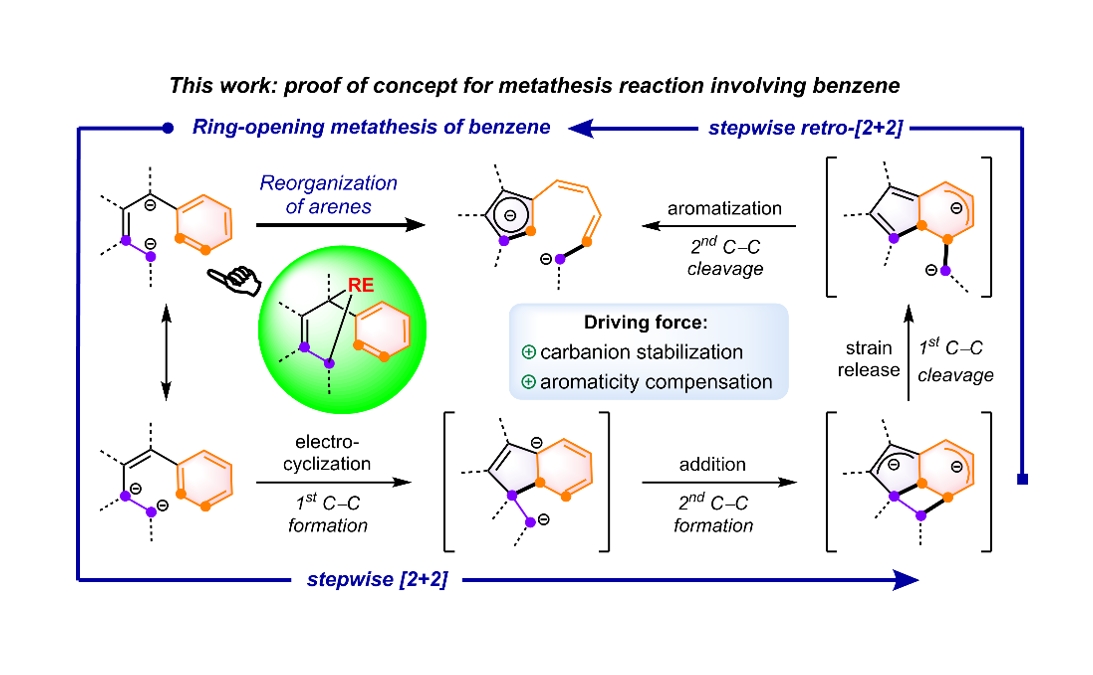In crystallography textbooks, it is commonly stated that regular tetrahedra composed of mono-atoms cannot completely fill the whole Euclidean space. In decahedral nanoparticles, five such tetrahedral units without distortion cannot fill a circle since this angle is less than the required angle of 72°. In icosahedral multiply-twinned particles (MTPs), the gaps required to fill space between the 20 tetrahedral unit are even larger. This problem has attracted enormous attention, and significant amounts of important work have been done to try to solve this puzzle. Many strain models have been proposed to explain it, and historically there has been fierce debate, as outlined in many reviews. Eventually, through detailed experiments and analysis, most of which are based on high-resolution electron micrographs in two dimensions (2D), the community has been convinced that the inhomogeneous-strain model is arguably the favored model for decahedral MTPs. In this work, the team of Prof. Jihan Zhou shows that a simple inhomogeneous-strain model may not be comprehensive enough to explain how strain is accommodated in icosahedral MTPs. They have performed complex three-dimensional (3D) atomic-resolution electron tomography thoroughly and in detail. The researchers resolved the 3D atomic misfit and the angular compensation of fivefold icosahedral MTPs with Janus-like morphology. They propose a new model, which is completely different from the well-accepted model (inhomogeneous model) in the scientific field for more than fifty years, should be introduced to the community. Their experimental data suggests that amorphization induces disordered tetrahedra, which fully cover all the 3D atomic misfit in icosahedral MTPs. The disordered amorphous domains are dilated compared to the ideal face-centered cubic (fcc) domain, resulting in a large amount of strain relaxation. This strain relief mechanism, along with clear 3D distributions of dislocations in many icosahedral MTPs, also provides extra evidence for the successive twinning growth mechanism, which is crucial for precise control of nanoparticle shapes and sizes. These results were recently published online in Nature Communications on February 13, 2025 (Nat. Commun. 16, 1595 (2025)) with the title “Strain Release by 3D Atomic Misfit in Fivefold Twinned Icosahedral Nanoparticles with Amorphization and Dislocations”.

Fig. 1 | 3D atomic structures of ICNP-1.
This work provides insights into the atomistic models for the modeling of formation mechanisms of fivefold twinned structures and computational simulations of lattice distortions and defects. The co-first authors are PhD students Zhen Sun and Yao Zhang. The corresponding author is Asst. Prof. Jihan Zhou. This work was supported by the High-performance Computing Platform of Peking University, the Electron Microscopy Laboratory at Peking University, and the National Natural Science Foundation of China (Grant No. 22172003).
Original link for the paper: https://doi.org/10.1038/s41467-025-56842-6





